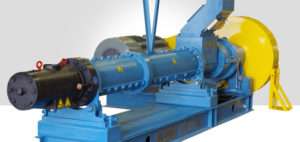
Like any business, seed oil manufacturing requires careful analysis of both capital and operational costs in order to derive maximum profit. This is why operators should carefully consider the full cost of any capital expenditures they make going forward, because the lower-cost option upfront may not prove to be such a bargain over a machine’s full lifecycle.
There are compact extruders available on the market today that can be purchased and installed at a relatively low cost. While these extruders have proven to be very popular in recent years, a quick analysis shows they can drive up costs over time in a number of ways.
One of the biggest operational cost factors to consider with any piece of industrial equipment is energy consumption. It turns out that stand-alone, compact dry extruders are very energy inefficient, particularly when viewed within the context of the entire oil-extraction process.
Energy Consumption
A quick examination of the specs of leading systems bears this out. Those who invest in compact extruders will use two one-ton per hour extruders to feed a single 2-ton per hour press. Two extruders with 125 Horse Power (HP) and a press with 75 HP equates to a 325 HP needed to process 2 tons per hour (TPH) of soy. To handle 6 TPH of soy, these plants would have to run six compact extruders and three presses for a whopping 975 HP.
Why is 6 TPH important? Because that is the yield available from a single 12-inch Anderson Dox Extruder and 12-inch Oil Expeller press, which run at a combined 700 HP. So while our configuration may cost more upfront, it saves more over the system’s lifecycle. And this savings is not insignificant. Going by the average energy cost of 7-9 cents per kWh, a typical producer could shave upwards of $100,000 off his operating budget per year.
| Two compact extruders feeding one standard oil press | Six compact extruders feeding three standard oil presses | 12-inch Anderson Dox Extruder and 12-inch Oil Expeller press | |
| Combined horsepower | 325 HP | 975 HP | 700 HP |
| Soy Processed | 2 TPH | 6 TPH | 6 TPH |
Maintenance Costs
Energy consumption is not the only factor when calculating operating costs, however. Equally important are the repair and maintenance burdens associated with multiple smaller machines. These compact extruders are more likely to require a rebuild every three to four weeks. Whereas the Anderson Dox Extruder has an average rebuild of 22 to 24 weeks, due primarily to its larger size and more rugged construction.
As operators know, maintenance is not only calculated by direct costs but by the indirect cost of lost production. Of course, with six smaller machines, maintenance might be able to be scheduled so that only one-sixth of your production capacity is down at any one time. But in our experience, most operators find that a longer maintenance cycle on a single machine delivers greater overall productivity than a process running at less than full capacity for extended periods of time.
Need assistance with your press now?
Do not hesitate to call us at 1(800) 336-4730 or use our contact form.
Quality Control
A third factor that is important to keep in mind is production quality. Processors that fail to provide adequate quality control tend to quickly lose business to competitors. By deploying a series of machines across the extraction process, manufacturers run the risk of producing inconsistent results as wear-and-tear, heat generation, and other performance metrics start to diverge. With a single extruder and a single press, the resulting oil will remain highly consistent.

Click here to learn more about the Anderson Dox Extruder.
Anderson’s Unique Dox Extruder
Anderson’s Dox Extruder is unique in that it comes in sizes of up to 6 TPH, it can operate for up to six months without maintenance and can also mount a drainage cage that allows it to process materials with high oil content. It is designed to cook and dry the material prior to the expelling process. It’s high-shear environment ruptures the oil containing bodies within the oilseed and generates frictional heat. This heat deactivates harmful enzymes within the oilseed. It cooks the proteins for a more efficient pressing and then flash-dries excess moisture.
The Dox was specifically engineered to double the capacity of an oil press, replace expensive steam-heated cooking vessels, double the life of the pressing parts, and reduce meal oil residuals to under 6%.
The numbers speak volumes.
Contact Anderson International Corp. for more information on how our extruder and press technology can improve your bottom line.